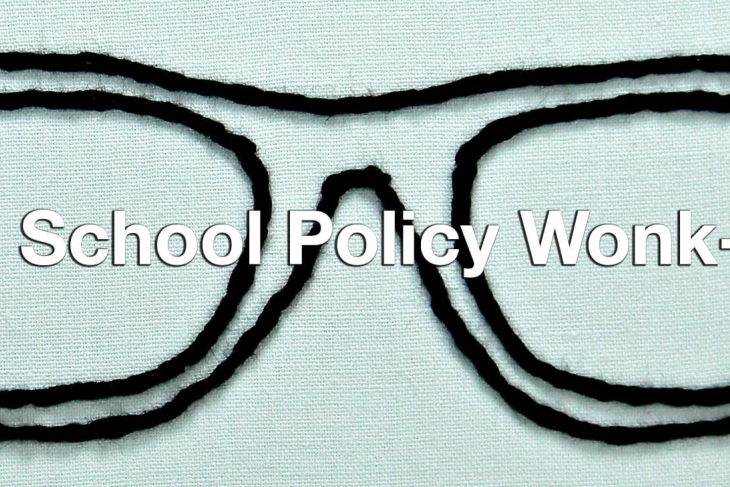Here follows the ninth entry in Fordham’s “Charter School Policy Wonk-a-Thon,” in which Mike Petrilli challenged a number of prominent scholars, practitioners, and policy analysts to take a stab at explaining why some charter sectors outpace their local district schools while others are falling behind.
The Gadfly has provided an important public service in seeking insights from some of the country’s best charter school thinkers on “why some charter sectors outpace their local district schools while others are falling behind.” As two old charter hands (one of us worked for Fordham in Dayton for twelve years on all manner of charter issues, while the other spent more than twenty years in California helping to rebuild that state’s charter program), we’ve learned a thing or two about what works and what doesn’t when it comes to charters and chartering.
Most of the lessons from the Gadfly’s charter series resonate with us. We agree that great charter sectors invariably tap top talent, get the balance right between operational freedoms and accountability for performance (or come close), and have the support and encouragement of significant friends (funders, political and policy, and business). Troubled charter sectors, on the other hand, allow almost anyone with a pulse to open a school, fluctuate wildly between letting a thousand flowers bloom and efforts to shut down all charters, and have at least as many enemies as friends.
What surprised us, however, was a paragraph in Michael Goldstein’s piece about charters in Boston that claimed, “Washington State has caps and let me say this: if there were a futures market and I could ‘short’ the 2020 CREDO study of their schools, I’d do it. The early signals are not promising (though I have friends there laboring hard and who’d strongly disagree.)” Neither of us knows Michael, but we would take his bet in a heartbeat. Here’s why.
Washington’s charter law, while not perfect, is surely one of the best any state has had coming out of the gate with new schools. According to the National Alliance for Public Charter Schools’ survey of state charter laws, Washington’s comes in six out of forty-three states. This despite the law’s capping of schools at forty. Washington’s charters will operate in a policy environment where they have operational freedoms but are held accountable for student performance.
Washington’s philanthropic community has stepped up big time and is providing multiyear support for Washington’s nascent charter program that includes funds to
- launch a quality-focused state charter school association that is fighting from the very start for quality as much as for growth,
- build a charter school incubator for new school operators,
- support the recruitment of top charter management organizations to Washington (both Summit Academies and Green Dot are opening two schools each in 2015–16),
- recruit the D.C.-based Charter School Board Partners to develop charter school governance in Washington State, and
- create high-quality shared services for the state’s charters.
When it comes to talent, Washington State may not have Harvard or MIT, but it is home to some of the world’s most productive and successful high tech companies, including Microsoft, Boeing, Nintendo, and Amazon. Talent is not averse to living and working in the Pacific Northwest, which is one of the country’s most livable and highly educated regions of the country.
Seattle and its surrounding communities are racially and socioeconomically diverse, but the children of the area are plagued by educational inequalities. “We may be one regional economy, but we are two divergent societies: one ‘have’ and one ‘have not,’” warned the Gates-funded Education Roadmap Project. In 2013, 80 percent of white and Asian students in Puget Sound were proficient in sixth-grade reading, but only 56 percent of African American students and 58 percent of Hispanic students met sixth-grade reading-proficiency targets. Children in Seattle and across Washington State need high-quality charter schools as much as children in other parts of the country.
Because of the need—and because of the support of Seattle’s philanthropic, business, and education-reform community—school-talent organizations like Teach for America and the New Teacher Project are quickly establishing a foothold in Washington. Experience from across the country tells us that both organizations are crucial to filling the talent needs of high-quality charter schools.
Washington is poised to be a leader in the school reform and charter school arenas. Learning from the successes and mistakes of others (including Ohio), Washington is committed to supporting the growth of a high-quality charter sector. Charter school supporters are working together to create models of innovation that are matched by real accountability for performance. Washington’s charter community (more than 350 people showed up for the state’s inaugural charter school conference, and this before any school has even opened) is committed to improving student engagement and achievement. It is also committed to working with others, in states like Idaho and Oregon, to share and improve educational practices across all public schools.
Terry Ryan is the president of the Idaho Charter School Network. Marta Reyes Newberry is the interim CEO at the Washington State Charter Schools Association.


